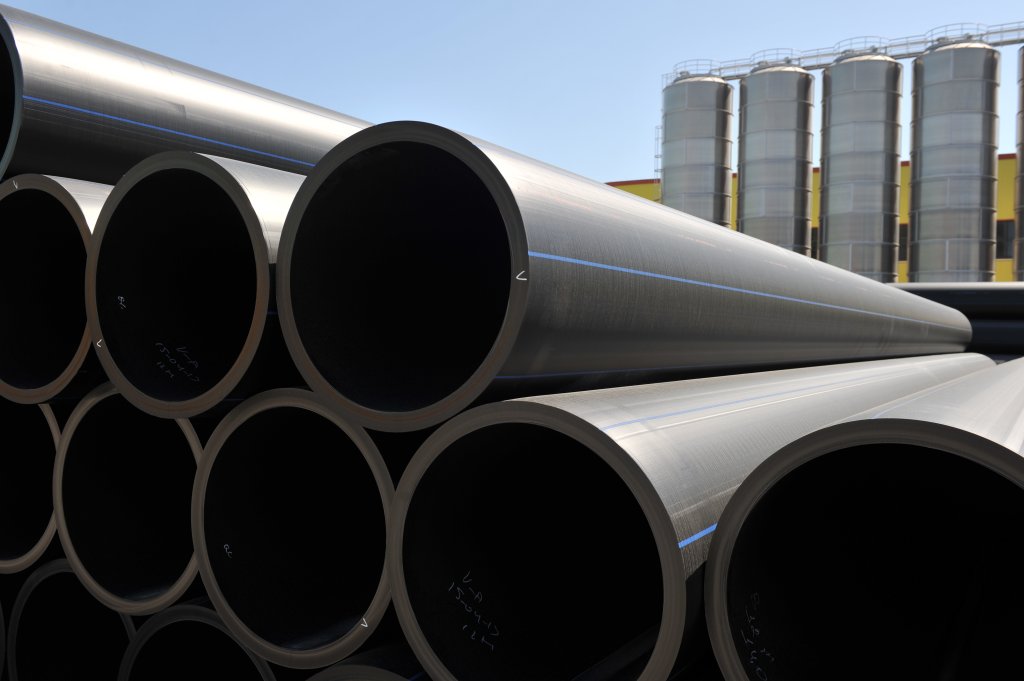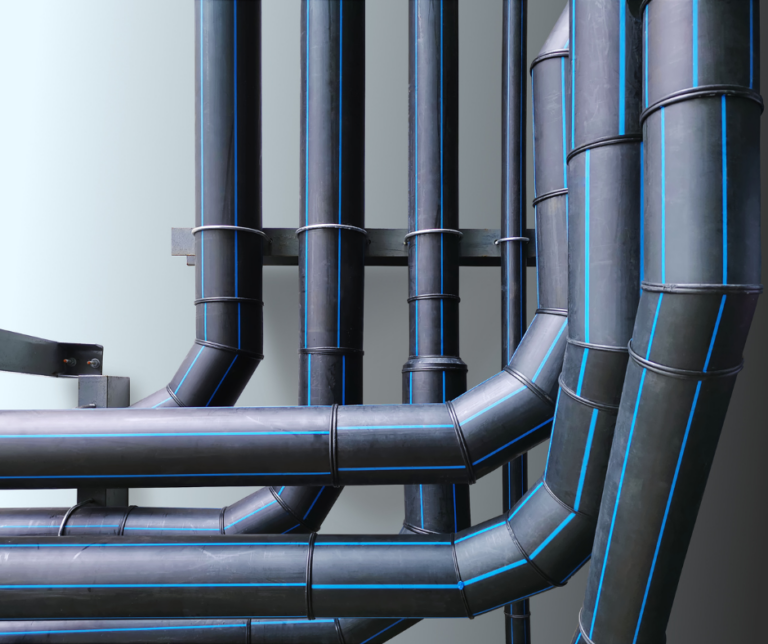Comprehensive Walkthrough to Installing hdpe pipe fittings Midland TX for Leak-Free Systems
Check Out the Production Refine Behind High-Quality HDPE Pipe and Its Applications
The production procedure of top quality HDPE pipelines is elaborate and methodical. It begins with the selection of basic materials that improve efficiency. Following this, ethylene undertakes polymerization to form resin, which is after that formed through extrusion. Quality control is vital, making certain that the end product fulfills strict standards. Nevertheless, the journey of HDPE pipelines doesn't end with manufacturing. Their applications throughout different sectors disclose a more comprehensive significance worth taking a look at.
Recognizing HDPE: Qualities and Advantages

High-density polyethylene (HDPE) is a versatile thermoplastic understood for its longevity and resistance to numerous environmental elements. This material displays outstanding tensile stamina, making it appropriate for demanding applications. Its low-density structure adds to a light-weight item, facilitating convenience of dealing with and installment. HDPE also showcases amazing resistance to chemicals, which decreases degradation when revealed to extreme compounds.
The material's reduced moisture absorption further boosts its durability, making it optimal for use in pipes and tank. Additionally, HDPE is immune to ultraviolet (UV) radiation, ensuring that products maintain their integrity even when exposed to sunlight. Furthermore, its flexibility enables the creation of intricate forms without jeopardizing toughness. The environment-friendly nature of HDPE, usually originated from recycled materials, contributes to its allure, promoting lasting methods in manufacturing. In general, these residential or commercial properties and advantages make HDPE a favored choice for different industrial and customer applications.
Basic Material Choice for HDPE Production
The choice of basic materials for HDPE manufacturing is necessary to validate the final product satisfies the desired specs and quality requirements. High-density polyethylene (HDPE) is mainly produced from polymerized ethylene, obtained from fossil fuels such as gas or petroleum. The high quality of these feedstocks considerably influences the mechanical and thermal buildings of the last HDPE.
Ingredients additionally play a significant function in improving HDPE's efficiency, consisting of anti-oxidants, UV stabilizers, and colorants, which improve toughness and resistance to environmental factors. The selection process have to think about not only the chemical structure of the raw materials but additionally their handling features to ensure reliable manufacturing.
Furthermore, the sourcing of resources ought to prioritize sustainability and compliance with ecological guidelines, as responsible techniques are crucial in today's market. Eventually, cautious basic material choice lays the structure for generating high-quality HDPE pipes suitable for varied applications.
The Extrusion Refine: Shaping HDPE Pipeline
The extrusion process plays a vital function in forming HDPE pipelines, starting with meticulous product prep work techniques that ensure ideal flow and consistency. Similarly essential is the design of the die, which straight affects the last dimensions and surface quality of the pipeline. With each other, these variables add substantially to the performance and top quality of HDPE pipeline production.
Product Preparation Techniques
Effective manufacturing of HDPE pipes begins with thorough material preparation methods, especially the extrusion process. During this stage, high-density polyethylene resin is first dried to remove dampness, making certain ideal flow attributes. The material is after that fed right into the extruder, where it undertakes heating and melting, transforming into a viscous state. This heating procedure is thoroughly managed to preserve the material's integrity and efficiency. The liquified HDPE is required through a die, shaping it right into a constant pipe type. Proper temperature level monitoring during extrusion is important, as it straight impacts the product's residential or commercial properties and the last product top quality. Once formed, the HDPE pipeline is cooled and reduced to specified sizes, ready for succeeding processing and applications.
Die Layout Value
Precision in die design plays an essential function in the extrusion procedure of HDPE pipes. The die acts as the final shaping tool, straight affecting the pipe's dimensions, wall surface density, and surface coating. A well-designed die warranties consistent material flow, minimizing problems such as irregularities and weak points. The geometry of the die need to be optimized to fit the specific residential or commercial properties of HDPE, including its viscosity and thermal behavior during extrusion. Furthermore, the cooling price of the product as it goes through the die can significantly impact the pipeline's architectural stability. Investing in advanced die innovation is important for makers intending to create premium HDPE pipelines that fulfill industry standards and customer expectations.
Quality Assurance Steps in HDPE Manufacturing
Various factors affect the top quality of HDPE pipeline manufacturing, reliable high quality control steps are essential to guarantee uniformity and reliability in the final product (American Plastics HDPE Pipe for Oilfield). Trick quality assurance techniques include rigorous product assessment, verifying that the raw polyethylene satisfies recognized standards for purity and thickness. Throughout the extrusion procedure, specifications such as temperature level, pressure, and cooling time are carefully checked to keep dimensional precision and structural honesty
Furthermore, post-production testing is vital; suppliers commonly perform hydrostatic examinations to analyze the pipeline's toughness and resistance to stress. Visual inspections for surface area flaws additionally improve high quality assurance. Qualification from pertinent standards companies, like ASTM or ISO, gives an added layer of integrity. By applying these comprehensive quality assurance steps, suppliers can minimize problems, boost performance, and guarantee that the HDPE pipelines fulfill the particular demands of numerous applications, ultimately causing consumer complete satisfaction and trust in the product.
Applications of HDPE Pipe Across Industries
HDPE pipelines are utilized across different fields as a result of their toughness and versatility. In water distribution systems, they ensure reliable distribution, while in wastewater monitoring, they provide reputable options for waste transportation. Additionally, farming watering networks gain from HDPE's resistance to corrosion and flexibility, making it an ideal option for modern farming techniques.

Water Circulation Equipments
A substantial number of industries depend on high-density polyethylene (HDPE) pipes for effective water circulation systems. Understood for their sturdiness and resistance to rust, HDPE pipes are extensively utilized in pipeline pigging companies metropolitan water system networks, agricultural watering, and industrial applications. Their light-weight nature promotes easy handling and installation, lowering labor expenses and time. In addition, HDPE pipelines can accommodate different stress levels, making them ideal for both low and high-pressure systems. Pipe Supplier American Plastics Midland. The flexibility of the material permits for smooth integration into existing facilities, decreasing the need for substantial excavation. Furthermore, HDPE's resistance to chemical leaching guarantees that the water provided stays safe and clean, making it an ideal option for maintaining the quality of safe and clean water across various markets
Wastewater Monitoring Solutions
Efficient water distribution systems additionally lead the way for innovative wastewater monitoring options, where high-density polyethylene (HDPE) Go Here pipelines play a considerable role. Distinguished for their longevity and resistance to deterioration, HDPE pipelines are excellent for delivering wastewater in different setups. Their adaptability permits for very easy installment in intricate settings, decreasing the demand for extensive excavation. Additionally, HDPE's smooth indoor surface area reduces rubbing, improving circulation rates and efficiency. These pipelines are likewise immune to chemical leaching, making sure that pollutants do not endanger the surrounding atmosphere. Industries, districts, and treatment centers increasingly count on HDPE pipes for their reliability and long life, making them a recommended option for modern wastewater management systems. This flexibility emphasizes the important importance of HDPE pipes across many applications.
Agricultural Watering Networks
Agricultural watering networks profit greatly from making use of high-density polyethylene (HDPE) pipelines, which give efficient and reputable water distribution to crops. HDPE pipes are lightweight, making them very easy to transfer and set up, while their adaptability permits for various configurations in diverse surfaces. These pipes show exceptional resistance to corrosion, chemicals, and UV radiation, ensuring toughness in harsh agricultural atmospheres. Furthermore, their smooth interior surface minimizes friction loss, maximizing useful reference water circulation and lowering power prices linked with pumping. The long life of HDPE pipelines, commonly surpassing half a century, contributes to lower maintenance and substitute expenditures. Subsequently, farmers significantly rely upon HDPE pipes to enhance watering performance and promote sustainable farming techniques, inevitably causing enhanced crop returns and source conservation.
Future Trends in HDPE Pipeline Modern Technology
As the demand for lasting and efficient framework expands, developments in HDPE pipeline technology are poised to transform numerous industries. Emerging trends consist of the combination of smart technologies, such as sensors and IoT capacities, which assist in real-time monitoring of pipeline conditions, minimizing maintenance expenses and avoiding leaks. Additionally, the advancement of advanced manufacturing strategies, such as 3D printing, is allowing the production of facility, customized pipeline designs that accommodate details task demands.
In addition, the concentrate on recycling and round economic situation methods is driving the technology of HDPE pipelines made from recycled materials, improving sustainability. Improved jointing techniques, such as electro-fusion and mechanical installations, are additionally boosting installation efficiency and integrity. The expanding emphasis on environmental laws is pushing makers to take on greener manufacturing processes, guaranteeing that HDPE pipes not just meet market criteria but also promote a more sustainable future for facilities advancement.
Often Asked Questions
Exactly How Does HDPE Compare to Other Plastic Products?
HDPE exceeds lots of various other plastic materials concerning toughness, chemical resistance, and versatility. Its reduced thickness and high tensile toughness make it optimal for different applications, frequently exceeding choices in both efficiency and durability.
What Are the Ecological Effects of HDPE Manufacturing?
The ecological influences of HDPE production consist of greenhouse gas discharges, power usage, and potential pollution from producing processes. In addition, inappropriate disposal can bring about dirt and water contamination, raising worries regarding lasting eco-friendly results.
Can HDPE Pipeline Be Reused?
Yes, HDPE pipes can be recycled. Several facilities accept utilized HDPE for handling, transforming it right into brand-new items. This reusing adds to sustainability efforts, reducing plastic waste while saving resources and power in the manufacturing cycle.
What Is the Life-span of HDPE Piping?

Just How Do Temperature Variants Affect HDPE Pipeline Efficiency?
Temperature level variants greatly impact HDPE pipeline performance, influencing flexibility and toughness. Heats can result in softening, while low temperatures might cause brittleness, eventually influencing the pipeline's resilience and suitability for numerous applications in diverse atmospheres.